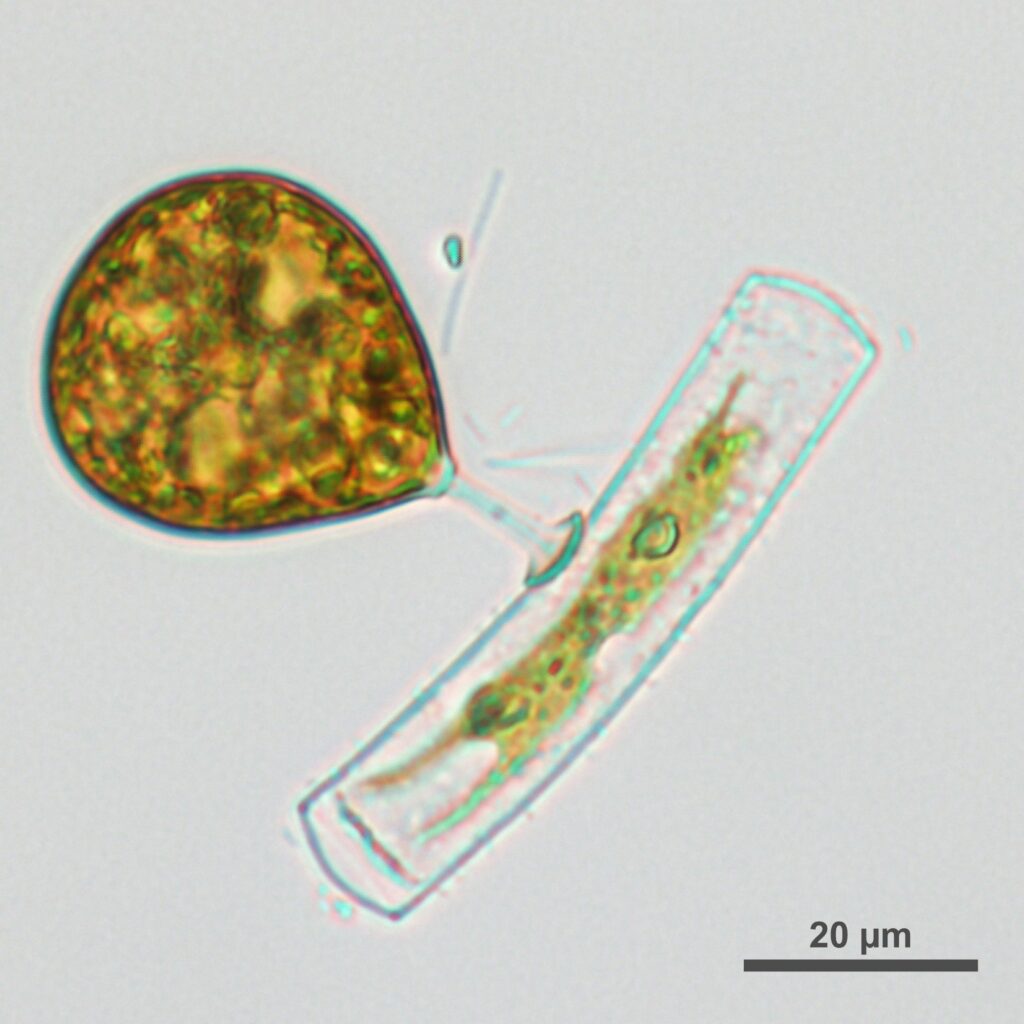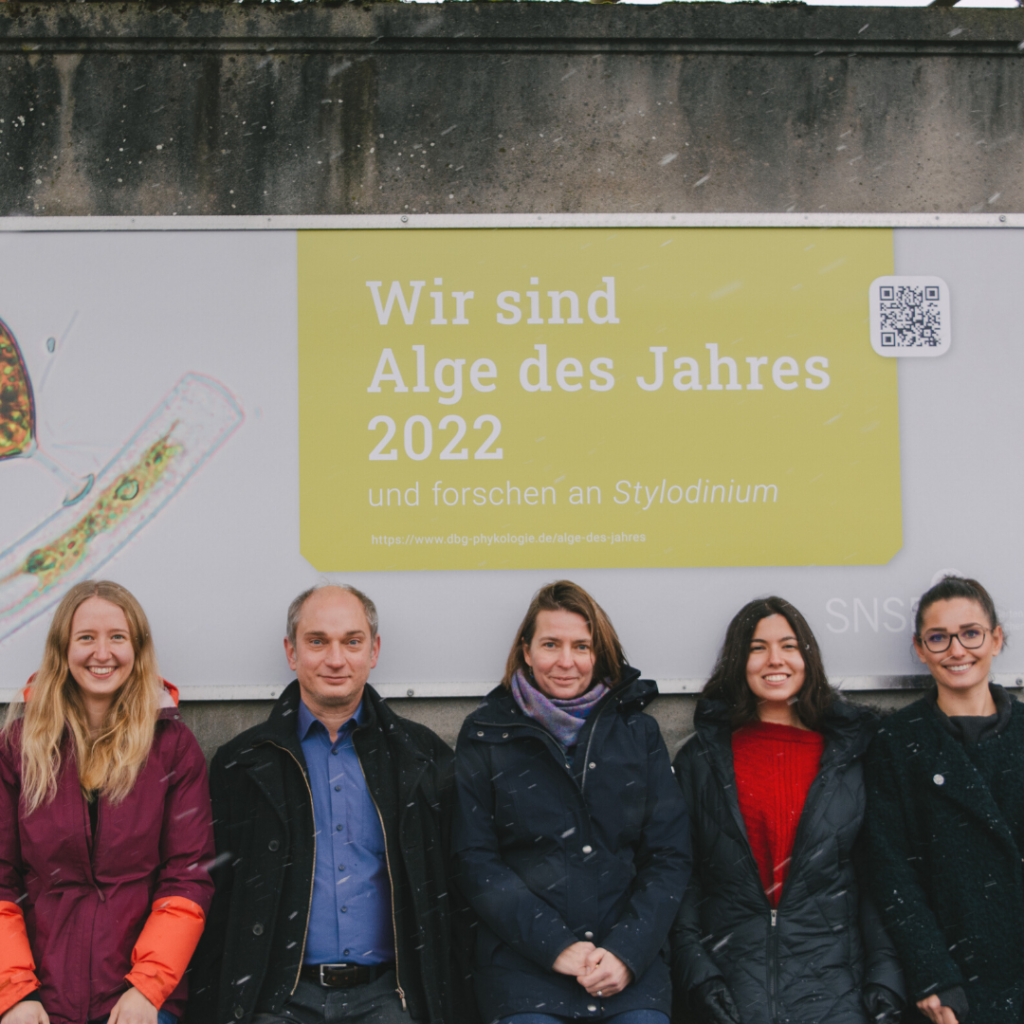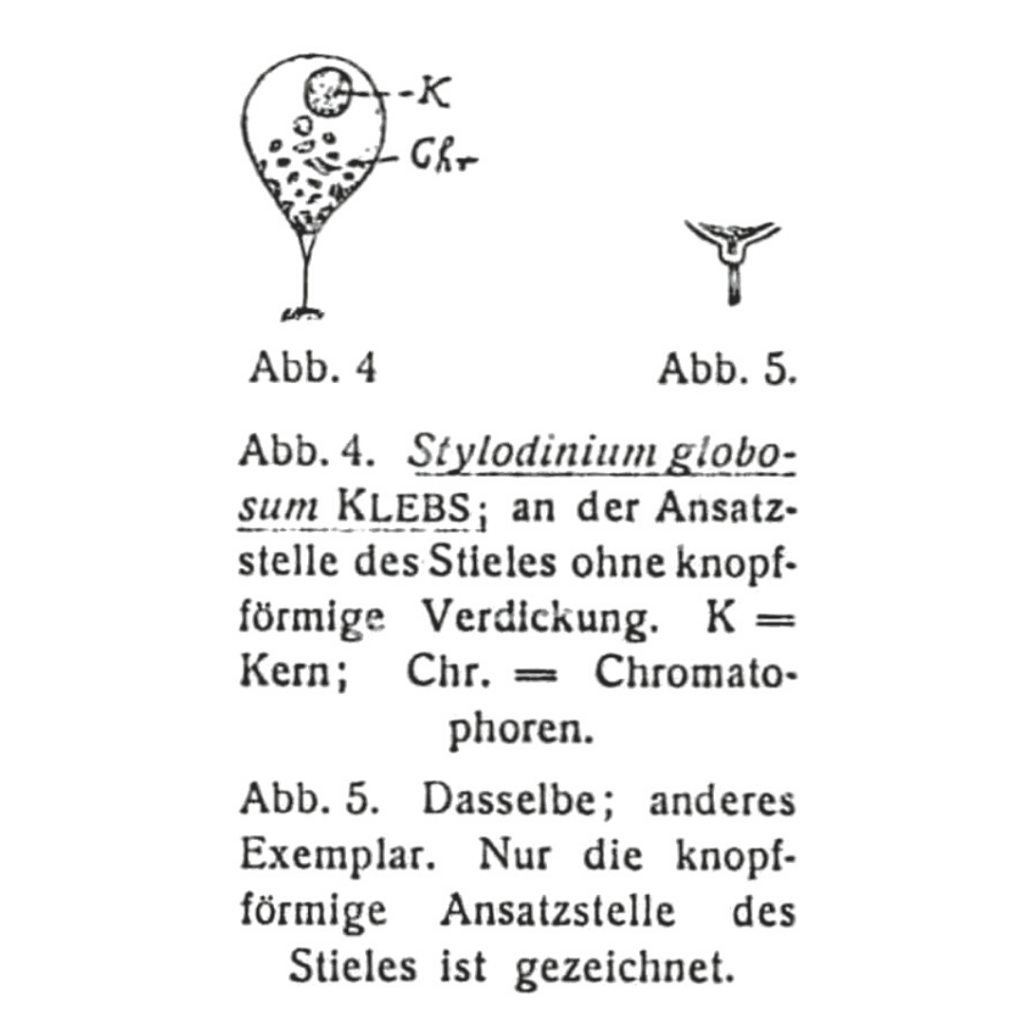algae research in the botanical garden
Stylodinium
Stylodinium caught the scientists’ attention because it behaves differently from its relatives in the Dinophyta group: Stylodinium lives in some of our native bogs and attaches itself to other algae, although it can actually swim by itself. Prof. Dr. Marc Gottschling from the Ludwig Maximilian University of Munich (LMU) and Dr. Urban Tillmann from the Alfred Wegener Institute, Helmholtz Centre for Polar and Marine Research (AWI), are working on researching the armored flagellate, whose habitat is threatened by the climate crisis.
At home in Upper Bavaria and Northern Germany
Stylodinium alternates between a mobile and a sedentary life form. Similar to a hitchhiking plant in rainforest areas, it can attach itself to other organisms. The researchers want to find out why this is so. In the future, they will investigate little-known bogs and water bodies in Germany where Stylodinium has already been observed. They hope to detect Stylodinium bavariense in the former peat bogs of Seeon in Bavaria and Stylodinium lindemannii in the Kieshofer Moor in Mecklenburg-Western Pomerania. The stalk algae are to be isolated from the water samples for growth in the laboratory. Subsequently, they can be further investigated.
Algae are multi-talented
The world of algae is full of surprises: Many algae are invisible to the naked eye, but collectively they make an enormous contribution to climate protection. As producers, they also form the basis of the food chain in the sea. But they are also indispensable in our native moors: with the help of photosynthesis, algae can not only produce oxygen, but also bind climate-damaging CO2.
Many algae species are also used in the food and cosmetics industries. They contain active ingredients to combat viruses, bacteria and fungi. They are also increasingly attracting the interest of the energy sector: algae could be suitable as biofuel because they grow quickly and can be cultivated without problems.
The spherical alga Stylodinium cf. bavariense from the former peat pits near Seeon in Bavaria attaches itself to a filamentous alga with a stalk after it has abandoned its floating stage (see photo).
Algae research at the Botanical Institute in Munich
Today, the Botanical State Collection is housed together with the herbarium of the Ludwig-Maximilians-Universität (LMU) in the listed building at Menzinger Straße 67 on the grounds of the Munich-Nymphenburg Botanical Garden. The scientists perform valuable work for climate and biodiversity research.
Alga of the year award
The alga Stylodinium was voted ‘Alga of the Year’ in 2022. Since 2007, the Phycology Section of the German Botanical Society (DBG) has elected an Alga of the Year. All information about the awarded species at: www.dbg-phykologie.de/alge-des-jahres

Light microscope image of Stylodinium
Photo: Corinna Romeikat, Ludwig-Maximilians-University Munich

v.l.n.r. Corinna Romeikat, Prof. Dr. Marc Gottschling, Prof. Dr. Gudrun Kadereit, Selin Gürkan und Victoria Holzer


